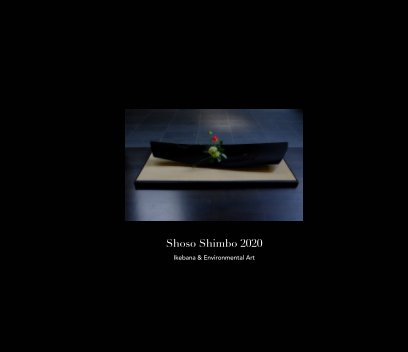Ikebana Dojo Ikebana Aesthetic Program: Level 2.3 Contrast 2 (8 June 2024)
Contrast 2 - Task
Ikebana Aesthetics Program - Zoom Ikebana Dojo
Four Ikebana Principles Level 2.3: Contrast 2
When:
Facilitators: Shoso Shimbo & Shoan Lo
Who can Join: Anyone, regardless of ikebana school, stage of learning or country of residence. Beginners welcome. Sessions will be conducted in English.
Overview
We will practice another basic style in Contrast 2. Each basic style has not only all of the ikebana principles but also the poetry of ikebana, the essence of ikebana aesthetics. If you cannot make a poetic basic style, you may not be able to make poetic freestyle arrangements. Please practise the basic styles many times and master the foundation of ikebana aesthetics so that you can create poetic freestyle arrangements in which flowers really come to life!
In Contrast 1, Contrast was defined as “the juxtaposition of different design elements,” for example, dark and light tones, warm and cool colours, or high and low density. It is about the degree of visual difference between the elements of a composition as a means of emphasis. In short, contrast is emphasis by means of difference. You can review the information we have discussed in Contrast 1 here.
Good ikebana works contain many types of contrast to create poetry.
Also note that degrees of contrast vary from stark contrast to subtle contrast.
If your work has high contrast in every element (colour, texture, tone, density etc.), your work may be "strong" but may not be very poetic. Good ikebana works usually combine high contrast in one or two elements with low contrast in the other elements. Managing degrees of Contrast is an advanced skill in ikebana aesthetics and will be discussed further in Contrast 3. For more about degrees of Contrast, revisit Contrast 1.
Analysing types and degrees of Contrast in ikebana works is helpful, but making it is more important. We will focus on High & Low density again, but in Contrast 2 we will learn how to create Contrast by using fillers effectively.
Objectives in Contrast 2
1. Become familiar with ikebana diagrams. See Session Notes - Contrast 2.
2. Learn basic Moribana techniques.
3. Find suitable branch materials. Please consider what types of tree are suitable, and which part of the tree branches are easy to work with. See Session Notes - Contrast 2.
4. Find the right amount of fillers. Consider its length & volume so that a breeze can flow through your arrangement.
5. Advanced students can use more than 3 materials i.e. 1 branch material & 2 flower materials.
What You Need
1. secateurs
2. container - any include a cup
3. kenzan - or other means to hold flowers
4. flower materials:
- Branch materials
- Flowers
Flower materials are guide only. You can choose any other materials as long as you focus on the topic.
How to Make It?
You will receive Session Notes Contrast 2 with step-by-step instructions for making your arrangement after your payment is received. Our free video and the Session Notes will help you make your ikebana work.
How to Apply & Participate
Step 1 - Book & Pay
(1) Book from our Booking Calendar. Pay by credit card (our cancellation policy).
(2) Upon receipt of your payment, our booking system will send you an email of invitation to the Zoom session. Also you will receive session notes on how to make our sample work usually 5 days prior to the session. Please contact us if you did not receive them in time.
Please visit our orientation page for more practical advice on how to use Ikebana Dojo.
Step 2 - Get Ready
(3) Do your assignment. Make your ikebana work before the session.
(4) Take a photo of your work (less than 0.5 Meg.) and send to ikebana.dojo@gmail.com at least 24 hours before the session starts if you want detailed feedback.
(5) Alternatively, you can share the photo of your work during the session. Find a way to share your file using Zoom.
Step 3 - Join Dojo
(6) Join the session. Prepare your work and its photo. Please join the session about 5 min before the session starts, and check your connection etc.
(7) Enjoy show and tell by other students before and after your own presentation. Group interaction is helpful for your learning. Works by others can inspire you.
Step 4 - Rework
(8) Rework after the dojo. Send the image of your revised work to Ikebana Dojo or share it to Ikebana Gallery Facebook Page. See how to apply for Ikebana Gallery Award if you are a student.
(9) If you would like to join Zoom Ikebana Dojo again, please visit our pages on Ikebana Aesthetics Program or Special Program. Register your email and follow our site to receive the latest updates.
Samples for Advanced Students
























